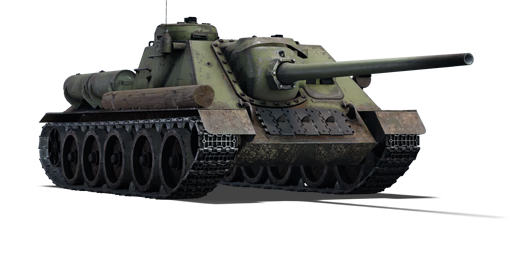



The SU-100 was a Soviet self-propelled anti-tank gun that was developed in 1944 based on the T-34-85 tank chassis. It was armed with a powerful 100 mm D-10S gun that could penetrate the armour of German heavy tanks at long ranges. It was produced at the Ural Heavy Machinery Factory (UZTM) in Yekaterinburg and saw extensive service during the last year of the Second World War and afterwards with the Soviet allies. The SU-100 was designed by a team of engineers led by L. I. Gorlitskiy, who received the Stalin Prize for their work.
It was one of the first vehicles introduced in the opening of "Ground Forces" in Update 1.41. The SU-100 is a classical casemate tank destroyer and as such has a fixed forward gun for its main armament, not too unlike the SU-85(M) tank destroyers. This gives the SU-100 a preference towards a defensive playstyle rather than an offensive one. As such, it is best to play the SU-100 in a supporting role, firing at distant enemies and ambushing them rather than facing them head-on. Though the external difference is minimal, the gun performance is big enough for a whole rank.
| Ammunition | Type | Armor penetration (mm) at a distance: | |||||
|---|---|---|---|---|---|---|---|
| 10 m | 100 m | 500 m | 1000 m | 1500 m | 2000 m | ||
| APHE | 218 | 212 | 189 | 164 | 142 | 123 | |
| HE | 27 | 27 | 26 | 24 | 23 | 21 | |
| APHEBC | 218 | 215 | 201 | 184 | 169 | 155 | |
| APCBC | 239 | 236 | 220 | 202 | 185 | 170 | |
| Smoke | 5 | 5 | 5 | 5 | 5 | 5 | |












Mobility | |
|---|---|
Protection |
|---|
Firepower | |
|---|---|